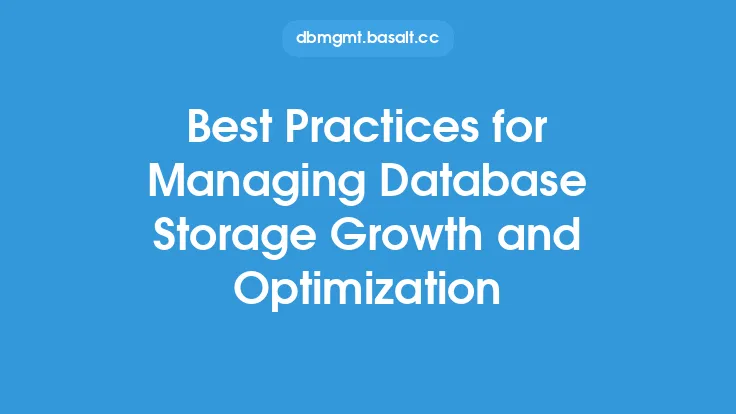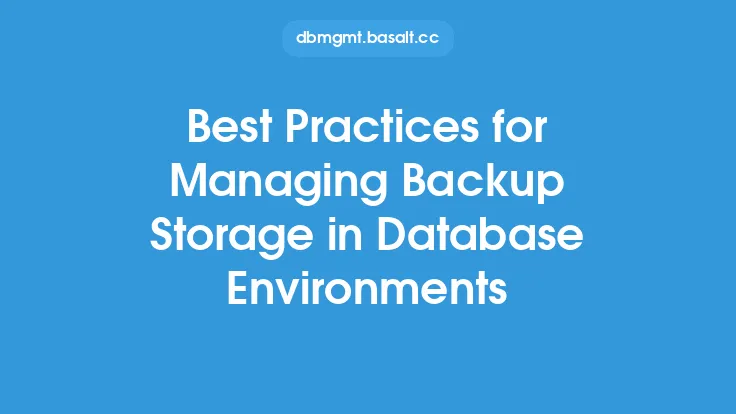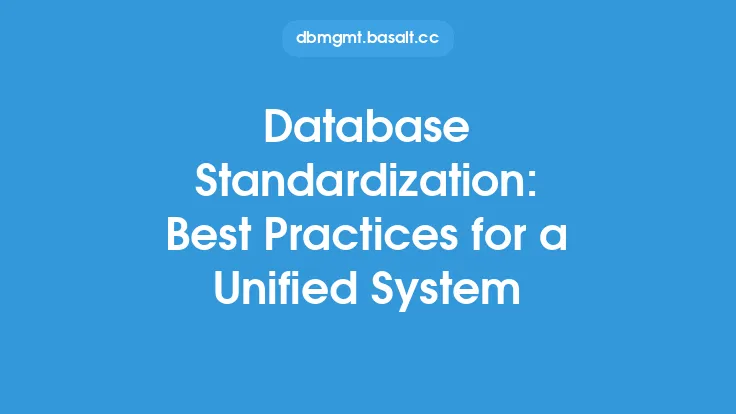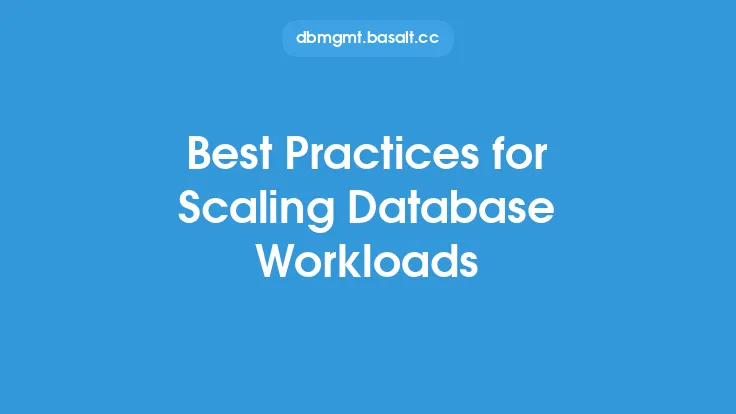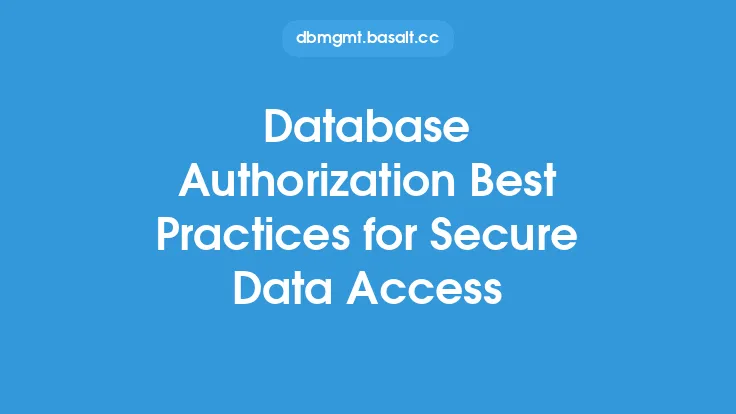Managing database resources effectively is crucial for ensuring the optimal performance, reliability, and scalability of database systems. Database resources include CPU, memory, storage, and network bandwidth, among others. Proper management of these resources helps in preventing resource bottlenecks, reducing downtime, and improving overall database efficiency. In this article, we will discuss the best practices for managing database resources, focusing on the key aspects that database administrators and developers should consider.
Introduction to Database Resource Management
Database resource management involves monitoring, controlling, and optimizing the utilization of database resources to ensure that the database system operates efficiently and effectively. This includes identifying resource-intensive queries, optimizing database configuration, and implementing resource allocation strategies. Effective database resource management requires a deep understanding of database performance metrics, resource utilization patterns, and the impact of resource bottlenecks on database performance.
Monitoring Database Resource Utilization
Monitoring database resource utilization is essential for identifying resource bottlenecks and optimizing database performance. Database administrators should monitor key performance metrics such as CPU utilization, memory usage, disk space, and network bandwidth. This can be done using built-in database tools, third-party monitoring software, or a combination of both. Monitoring tools provide real-time insights into database resource utilization, allowing administrators to identify areas of improvement and take corrective action.
Optimizing Database Configuration
Optimizing database configuration is critical for ensuring efficient resource utilization. This includes configuring database parameters such as buffer pool size, sort area size, and log file size. Database administrators should also consider configuring resource-intensive features such as indexing, caching, and parallel processing. Additionally, optimizing database configuration involves setting up resource allocation strategies, such as resource pools and workload management, to ensure that resources are allocated efficiently.
Managing Database Workloads
Managing database workloads is essential for ensuring efficient resource utilization. Database administrators should identify resource-intensive workloads and optimize them to reduce resource utilization. This can be done by analyzing workload patterns, identifying bottlenecks, and implementing optimization techniques such as query optimization, indexing, and caching. Additionally, database administrators should consider implementing workload management strategies, such as workload balancing and resource prioritization, to ensure that resources are allocated efficiently.
Implementing Resource Allocation Strategies
Implementing resource allocation strategies is critical for ensuring efficient resource utilization. Database administrators should consider implementing resource pools, which allow for the allocation of resources to specific workloads or applications. Additionally, database administrators should consider implementing workload management strategies, such as workload balancing and resource prioritization, to ensure that resources are allocated efficiently. Resource allocation strategies help in preventing resource bottlenecks, reducing downtime, and improving overall database efficiency.
Best Practices for Database Resource Management
Best practices for database resource management include monitoring database resource utilization, optimizing database configuration, managing database workloads, and implementing resource allocation strategies. Database administrators should also consider implementing automation tools, such as automated monitoring and alerting systems, to ensure that database resources are managed efficiently. Additionally, database administrators should consider implementing continuous monitoring and optimization strategies to ensure that database resources are utilized efficiently and effectively.
Common Database Resource Management Mistakes
Common database resource management mistakes include failing to monitor database resource utilization, neglecting to optimize database configuration, and failing to implement resource allocation strategies. Database administrators should also avoid over-allocating resources, which can lead to resource waste and reduced database efficiency. Additionally, database administrators should avoid under-allocating resources, which can lead to resource bottlenecks and reduced database performance.
Conclusion
In conclusion, managing database resources effectively is crucial for ensuring the optimal performance, reliability, and scalability of database systems. Database administrators and developers should consider monitoring database resource utilization, optimizing database configuration, managing database workloads, and implementing resource allocation strategies. By following best practices for database resource management, database administrators can ensure that database resources are utilized efficiently and effectively, leading to improved database performance, reliability, and scalability.
